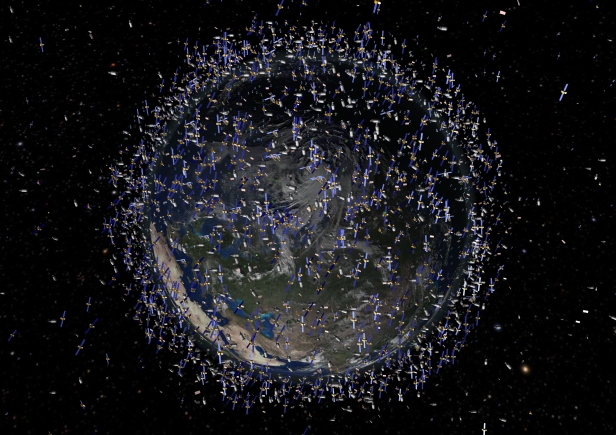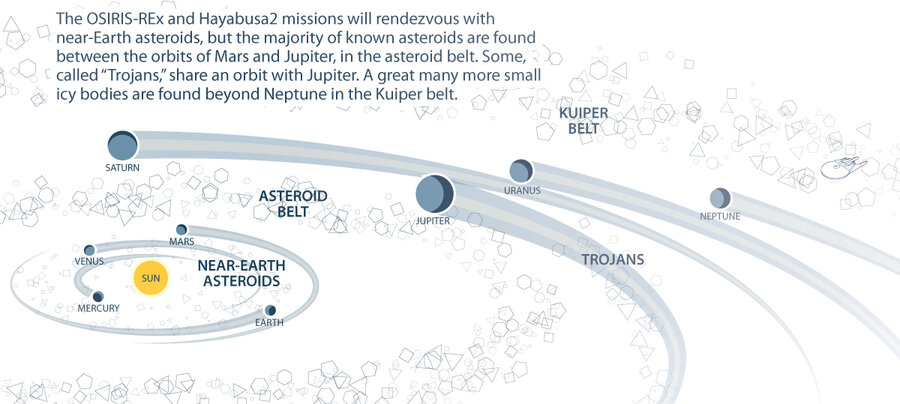20 Fascinating Asteroid Facts - ASTEROIDS - Bridge To Nowhere How Often Do Asteroids Collide With Each Other
Out from nowhere, a ball of fire can emerge and hit the Earth like a speeding bullet resulting in an explosive collision releasing as much energy as tens of thousands of megatons of TNT! Results? An extinction-level event that can wipe out most or all of life forms on this blue orb that we call home! What can cause this? Yes, you are right! An asteroid! Looming somewhere deep in the darkness of our very own Solar System, these asteroids are messengers of eminent doom! The question is, ‘when’? No one knows but someday, mankind will have to face this threat. So, let us today learn 15 fascinating facts about asteroids and find out what they really are and what they are capable of! Are you ready?

Asteroid Facts: 1-10
1. Asteroids are amazing celestial objects that hang in our Solar System. There is a whole reservoir of these objects hanging between Mars and Jupiter. How many of them are there? Millions of them! This reservoir is known as asteroid belt.
2. Asteroids are not new or sudden creations. They are old, very old! In fact, they are as old as our planet Earth or any other planet in our Solar System. These asteroids share a common birth with our planets. About 4.6 billion years ago when our Solar System was forming, objects would collide with each other, sticking together to form larger objects and eventually forming planets and satellites. Some of these objects broke apart on collision and failed to gain mass. These unfortunate ones are the asteroids!
3. As far as chemical composition of asteroids is concerned, they are home to wide range of minerals, metals and other substances. Asteroids that were formed by breaking away from some planets inherit a similar chemical composition as the planets. 4. The chemical composition of asteroids undergoes changes while orbiting the sun. This happens because of various chemical reactions that take place. Asteroids that are far from the sun usually have silicate rock composition. Those that are close usually are carbonaceous. 5. There are metallic asteroids present as well. They are mostly made of iron but may also contain other metals like platinum, gold, palladium, iridium etc. There may be some asteroids that have half metallic and half silicate composition. 6. Asteroids often collide with each other. Upon collision, smaller ones can break and end up as dust on the larger ones. This dust is known as regolith. It is not necessary that asteroids will collide only with other asteroids. Any object that crosses their path can collide. 7. Asteroids are pretty dangerous. Collision between asteroids can throw them out of their orbits and set them on a collision course with planets. Earth is not immune to such impacts. As a matter of fact, collision between asteroids and planets shape the very fabric of a planet. Earth as experienced numerous asteroid collisions ever since it birth. 8. Collision of asteroids with planets is known as impact event. An impact event can shape the atmosphere of a planet and change its climate. These impact events can be extinction-level events. For instance, it was an asteroid that led to the extinction of dinosaurs some 65 million years ago. 9. Not all asteroids that are on collision course with earth will collide on Earth. Most of them are destroyed in upper atmosphere. Some burn out and sprinkle on earth in form of cosmic dust. These are usually very small asteroids. However larger asteroids make it through the atmosphere. Some are just big enough to cross the atmosphere and explode at 10 to 15 kilometers above the surface. Some are quite big and eventually land on earth’s surface. 10. Those asteroids that crash directly on earth’s surface leave a crater and destroy everything in the surrounding area. The extent of damage caused will depend on the size of the asteroid. A single very large asteroid is capable of wiping out life from entire earth. Those that do not crash but rather explode a few kilometers above the surface are also capable of causing immense damage because of the heat and shockwave produced by the explosion.
Asteroid Facts: 11-20
11. The asteroid that killed dinosaurs 65 million years ago was so big that it left a crater that was 180 kilometers in diameter. The sheer force and energy of the impact is way beyond our imagination. Those dinosaurs that were close enough to the epicenter of the impact were wiped out immediately. Those that were in far off continents were killed because of the global climate change.
12. Asteroids are responsible for shaping the evolution course on planet earth throughout its history. After the rule of dinosaurs were ended by a fire ball that left behind the 180 km wide Chicxulub impact crater, the changes in climate and environment gradually became suitable for most adaptable species like mammals.

13. Scientists even believe that the ancient asteroids that collided with earth during the early stages of development of the planet were actually responsible for bringing water and other carbon-based materials that lead to creation of life on earth.
14. Not just planets, even asteroids have moons! Some of the planets in solar system have moons. These moons revolve around the planet just like the planet revolves around the sun. Similarly asteroids also have moon. Not all asteroids have a moon. The first every asteroid that was discovered to have a moon was ‘243 Ida’ and its moon is known by the name ‘dactyl’. The space craft named Galileo did a flyby of 243 Ida in 1993 and discovered its moon.
15. The sizes of asteroids vary significantly. Some are just under 10 meters and some are several hundreds of kilometers wide. An asteroid named Ceres was discovered by Italian astronomer named Giuseppe Piazzi in 1801 is 950 kilometers wide. Because of its sheer size, Ceres has earned the status of a dwarf planet. Asteroids that are 10 meters or less in diameter are known as meteoroids.
16. An asteroid is known as a meteorite only when it crashes on earth. There are iron meteorites and stony meteorites. Iron meteorites have a typical composition of 91% iron, 8.5% nickel and 0.5% cobalt. Stony meteorites on the other hand have 36% oxygen, 26% iron, 18% silicon, 14% magnesium, 1.5% aluminum, 1.4% nickel and 1.3% calcium.

17. Asteroids are present in groups. There are primarily 4 groups – the main belt or the asteroid belt that hangs between Mars and Jupiter, the Kuiper Belt, the scattered disc (which is a subset of Kuiper Belt) and the Trojans. Finally we have another one known as the Oort Cloud. This Oort Cloud is way to0 far in outer space and physically studying the cloud is not possible as of now.
18. The motion of an asteroid can be affected by sunlight. According to astronomers, when the sunlight hits an asteroid, the light is absorbed. After sometime, the asteroid re-emits the same in form of thermal radiation. During the thermal radiation, the asteroid gains a tiny thrust in its motion. Over thousands of years, these tiny thrusts can gradually push the asteroid in what is known as resonance region where the repeated gravitational pull of Saturn and Jupiter manage to alter the orbit of the asteroid and put in the NE (near earth) neighborhood of our solar system. Thus, an asteroid can become a near-earth asteroid other a period of thousands of years.
19. Talking of near earth asteroids (NEAs), there are actually several of these and are actually potential threats. The NEAT and SENTRY programs of NASA are responsible for constantly monitoring and studying these NEAs. There have been several close calls in recent years with some NEAs getting too close to earth. Luckily they missed. One that came close to us was in September 2013 and will return back in 2032 but NASA is pretty sure that it will once again sail-past our Earth unless of course some weird gravitational anomaly pulls it out of its orbit and sets it on a collision course with earth. If that happens, it will unleash a force which is equal to at least 2000 atomic bombs. What does that mean? An extinction level impact! In January 2014 the first asteroid discovered for the year actually entered earth’s atmosphere and luckily burned out.
20. In February 2013, another asteroid managed to enter earth’s atmosphere over Russia’s Chelyabinsk city. It exploded in sky but sent out shockwaves that caused quite some damage and injured 1,200 people. Scientists say that the asteroid was nearly 65 feet wide.

Credit:

0 Comments
Posting Komentar